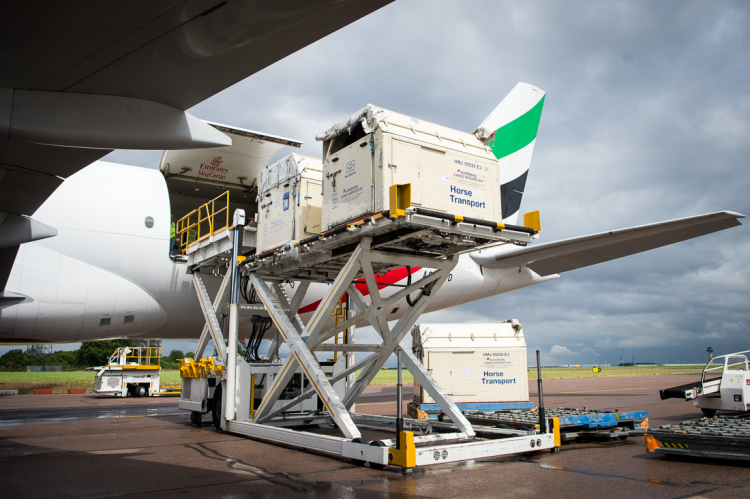This week, several of the jumping horses start their travel to Rio. In all there are nine shipments delivering more than 200 horses to Rio International Airport, en route to the Olympic Equestrian Centre in Deodoro Olympic Park – and while the dressage and eventing horses have already flown out, most of the jumping horses embark on their journey this weekend.
This highly complex operation involves three hubs in Europe and America: Stansted (GBR), Liege (BEL) and Miami (USA).
Here are the facts on how the world’s best jumpers travel to Rio:
Baggage allowance: Just like human flights, each equine passenger has an allocated baggage allowance, by weight – however this includes the horse itself! Plus water, hay, 30kg shavings as bedding, water buckets, feed buckets, tack bags (for saddles and bridles), rugs and any spare equipment. Each horse is also allowed: one large hay net, water and his or her own personal bucket, and a small overnight bag with a spare head collar and rug, in case it gets chilly.
In-flight meals and drinks: Mash before they get on the flight, then hay and water throughout the flight.
Passports: Every horse has a passport but, unlike human athletes, they must be microchipped to travel. They all also have an export health certificate.
In-flight wear: Horses, like people, like to travel in comfort. Some may wear a light rug but generally wear as little as possible to stay cool and comfortable. Most will wear protective leg gear.
Check-in: Flights are a carefully orchestrated operation though Peden Bloodstock, so check-in is a very civilised affair, no fighting for the best seats! All have arrival slots at the airport so that vet checks can be carried out, and loading follows a specific planned order to place all passengers in the right part of the plane.
First Class/Business/Economy: All Olympic horses travel in style, in 112cm wide stalls, with two horses per pallet – the human equivalent of business class. This gives them plenty of room to feel comfortable, but there is the option to upgrade to first class.
Cabin crew: Specially trained staff fly with the horses, looking after their welfare, comfort and safety. They are known as flying grooms.
Stallions at the front: Stallions travel at the front of the plane so they aren’t distracted on-flight by the mares.
Is there a doctor on board? This is never an issue if you’re a flying horse, there are always vets on board to ensure happiness and comfort throughout.
Aircraft facts: The horses fly on an Emirates SkyCargo Boeing 777-F aircraft – this is a freight plane, and one especially equipped for the safe and comfortable transport of horses. It has custom-designed horse stalls and controlled temperature zones to ensure maximum comfort and minimal stress for the horses and comes complete with trained and experienced expert personnel who know how to handle horses to safeguard their welfare.









